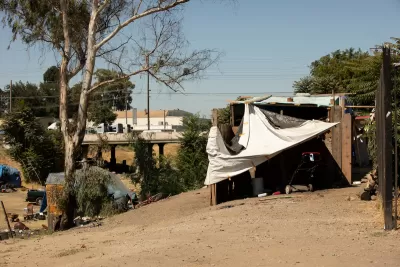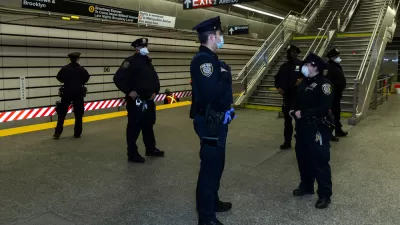Unhoused adults are more than three times as likely to die in any given year as their housed counterparts, research shows.

A new study from the National Bureau of Economic Research reveals the stark disparity in life expectancy between housed and unhoused people, reports Christian Leonard in the San Francisco Chronicle.
The study shows that “non-elderly homeless people are about 3.5 times more likely to die in any given year as people with housing,” while “a 40-year-old person experiencing homelessness has a similar risk of death as a 60-year-old person with housing.”
The study analyzed data about 140,000 homeless individuals from the U.S. Census and Social Security Administration and “measured death risk by tracking the percentage of homeless people who lived to the end of a six-month period, compared to the share of housed people who lived to the end of that same period.”
In one surprising finding, the study showed that sheltered and unsheltered homeless people had the same mortality risk, signaling that “while shelter is important, it doesn’t address all the challenges homeless people face.”
FULL STORY: First-of-its-kind homelessness study reveals alarming statistic for California’s unhoused

Alabama: Trump Terminates Settlements for Black Communities Harmed By Raw Sewage
Trump deemed the landmark civil rights agreement “illegal DEI and environmental justice policy.”

Study: Maui’s Plan to Convert Vacation Rentals to Long-Term Housing Could Cause Nearly $1 Billion Economic Loss
The plan would reduce visitor accommodation by 25% resulting in 1,900 jobs lost.

Why Should We Subsidize Public Transportation?
Many public transit agencies face financial stress due to rising costs, declining fare revenue, and declining subsidies. Transit advocates must provide a strong business case for increasing public transit funding.

Paris Bike Boom Leads to Steep Drop in Air Pollution
The French city’s air quality has improved dramatically in the past 20 years, coinciding with a growth in cycling.

Why Housing Costs More to Build in California Than in Texas
Hard costs like labor and materials combined with ‘soft’ costs such as permitting make building in the San Francisco Bay Area almost three times as costly as in Texas cities.

San Diego County Sees a Rise in Urban Coyotes
San Diego County experiences a rise in urban coyotes, as sightings become prevalent throughout its urban neighbourhoods and surrounding areas.
Urban Design for Planners 1: Software Tools
This six-course series explores essential urban design concepts using open source software and equips planners with the tools they need to participate fully in the urban design process.
Planning for Universal Design
Learn the tools for implementing Universal Design in planning regulations.
Smith Gee Studio
Alamo Area Metropolitan Planning Organization
City of Santa Clarita
Institute for Housing and Urban Development Studies (IHS)
City of Grandview
Harvard GSD Executive Education
Toledo-Lucas County Plan Commissions
Salt Lake City
NYU Wagner Graduate School of Public Service





























